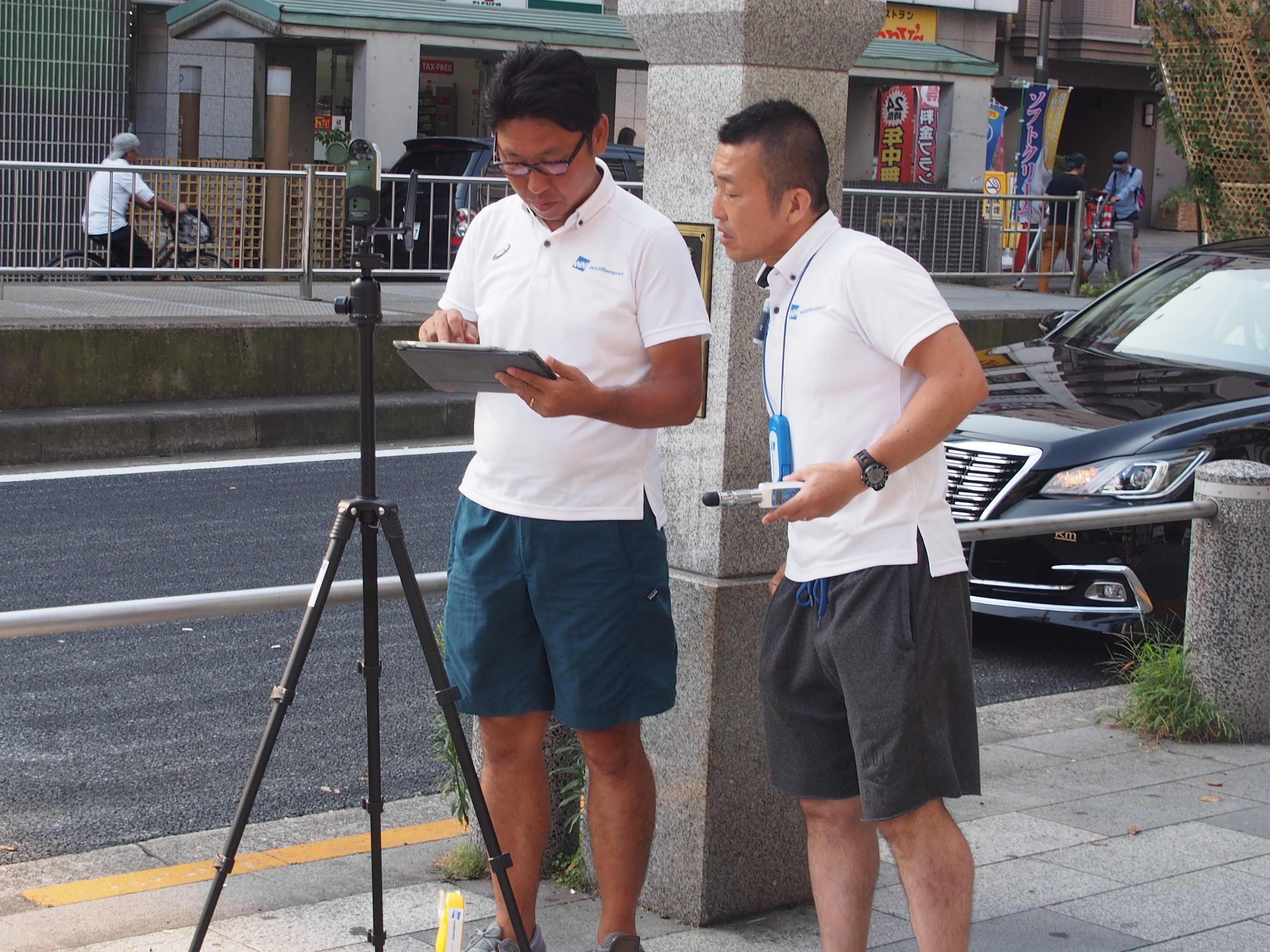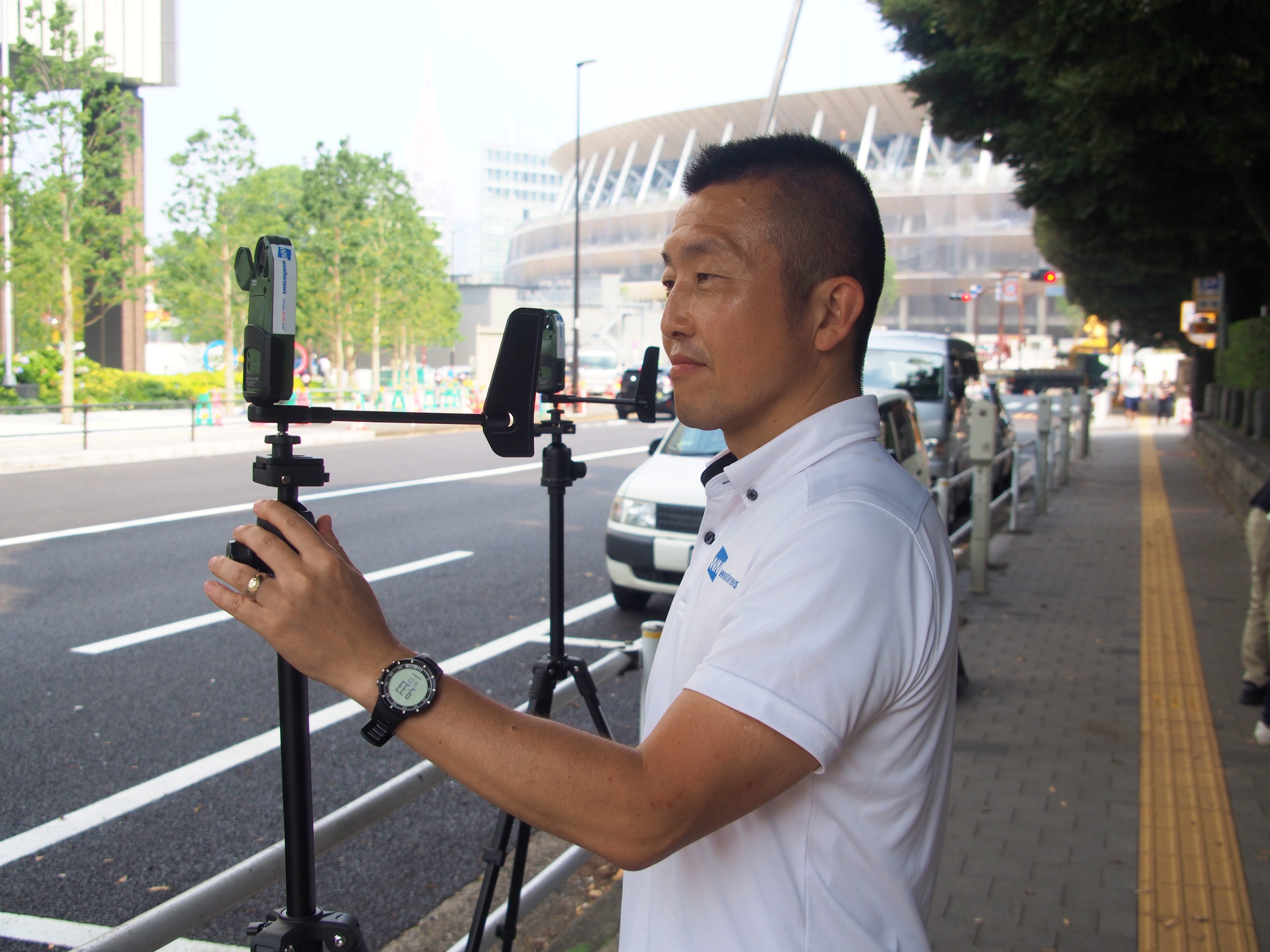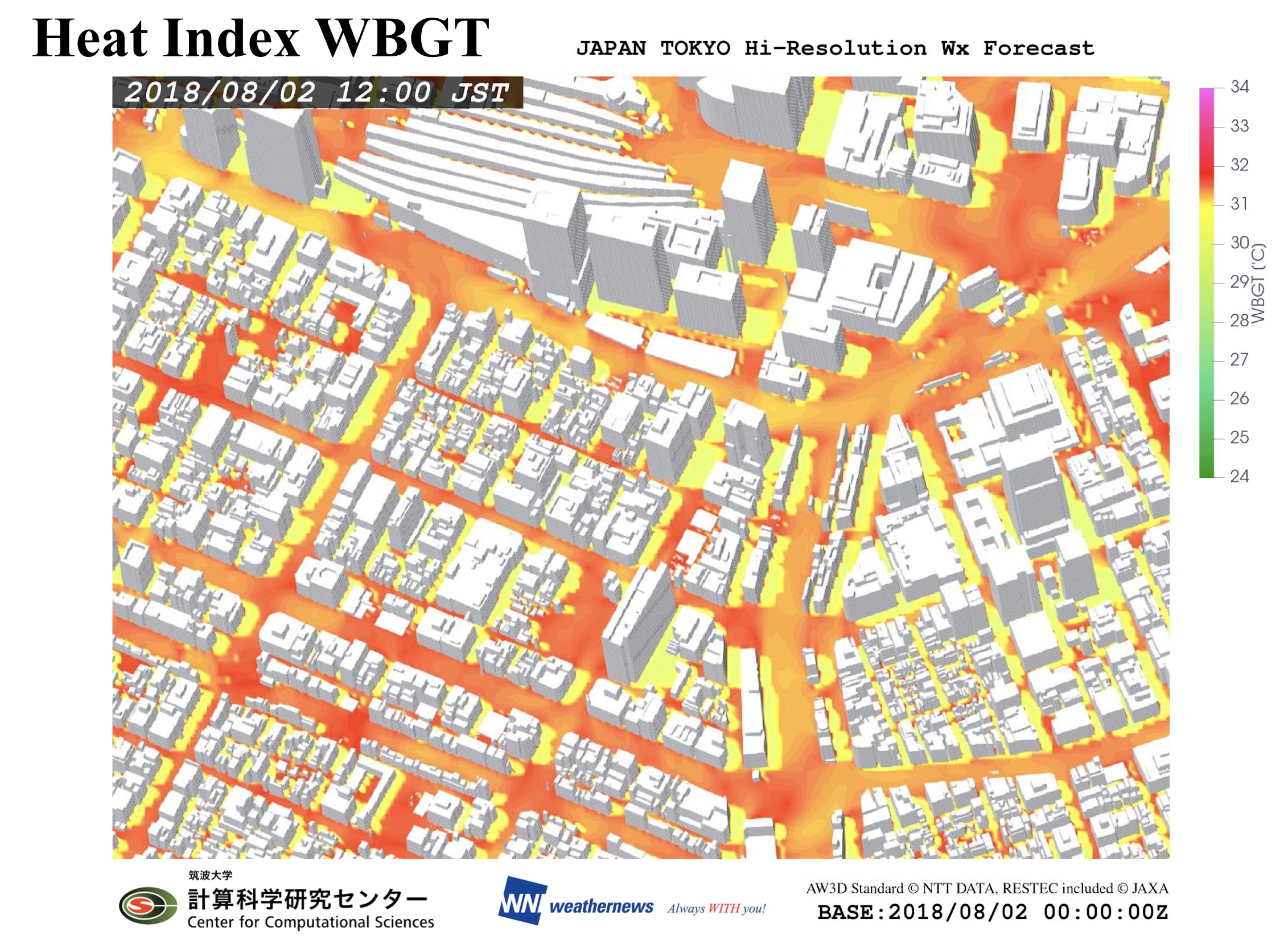News & Press Release
Looking Ahead to 2020, Weathernews Starts Weather Data Observations at Midsummer Competition Venues
Conducting observations on marathon course and verifying Urban Weather Prediction Model in collaboration with University of Tsukuba
Sports Festival > Setting its sights on a major international sporting event to be held in Tokyo in 2020, Weathernews Inc. has started advance observations at many competition venues, including marathon, race walk, triathlon, sailing, and rugby, in order to collect and analyze weather data to be used for formulating athlete/team strategies and measures to protect spectators from the heat. The observations around the marathon course also serve as a full-fledged verification of a 1~5-meter-mesh ultra high-resolution “Urban Weather Prediction Model,” aiming for practical implementation in 2020. On August 2nd, Weathernews and the University of Tsukuba worked in collaboration to conduct the first observations around the course serving as a verification of this prediction model. Looking ahead, we will use this observation data to verify that the position of shady areas, temperature and heat indices, and the flow of wind blowing between buildings are accurately depicted, making necessary adjustments aimed at practical implementation.
In order for the Japanese National Teams to gain a real advantage from the weather, Weathernews will contribute to excellent team preparations by accumulating and providing weather data regarding competition venues. We will also work to achieve practical implementation by summer 2020 of world-leading forecasting technologies that help prevent spectators from suffering heatstroke.

This summer is the last chance - conducting observations around many competition venues, such as the triathlon course
Over the last three years, the Weathernews Sports Weather Team has conducted annual observations around competition venues, and this year too, as the last chance before 2020, we have started our summer on-site observations. From 7 a.m. on July 30th, our Sports Weather Team conducted observations at the three segments of the triathlon course, comprising a 1.5 km swim, a 40 km bike road race, and a 10 km run, moving around to match the actual competition times. After first measuring the sea water temperature at Odaiba, we used portable observation equipment to record temperatures, humidity, WetBulb Globe Temperature (WBGT, an index of heat stress in direct sunlight), wind direction, and wind speed at 1.5 m above ground level, as well as road surface temperatures. We also moved around while recording a video of the course so that athletes can easily visualize the position of sunny and shady areas. At the expected competition times (7:30 ~ 9:30 a.m.) on that day, the temperature around the course averaged 32.9 ºC, even though it was still morning, hitting a maximum of 38.8 ºC, and the temperature rose so high that observation staff came close to suffering heatstroke.
Observations were also conducted around the race walk route on July 31st, and around the marathon course on August 2nd, and the second triathlon course observations are scheduled for August 4th. Further observations will be repeated at about 10 competition venues, including marathon, sailing, and rugby, and we will continue collecting weather data from an athlete’s perspective until September.
Verifying the “Urban Weather Prediction Model” at the marathon course
In order to predict detailed weather conditions on the marathon course running between the tall buildings of Tokyo, Weathernews has been conducting joint research since September 2017 with Professor Hiroyuki Kusaka of the Center for Computational Sciences, Univeristy of Tsukuba aimed at practical implementation of the “Urban Weather Prediction Model.”
The marathon course observations conducted on August 2nd also served as a verification of this prediction model, and observation staff were divided into two groups: the Sports Weather Team’s Mobile Observation Team and a Fixed-point Observation Team comprising the Forecast Center and the University of Tsukuba.
The Mobile Observation Team, with Kazuo Asada and other members from the Sports Weather Team, started out from the New National Stadium at 6 a.m. in line with actual competition times, and using portable observation equipment, they recorded temperatures, humidity, WBGT, wind direction, wind speed, and road surface temperatures under sunny/shady conditions at 5 km intervals. They covered the full 42.195 km in about three hours, while at the same time recording a video of the road so that athletes can easily visualize sunny and shady areas.

(Koji Horiuchi, Weathernews Sports Weather Team)
Meanwhile, the main mission of the Fixed-point Observation Team was to verify the “Urban Weather Prediction Model.” Mr. Sakamoto, other members from the Forecast Center, and University of Tsukuba students divided into four areas around the course, and they recorded temperatures, humidity, WBGT, wind direction, wind speed, and road/building surface temperatures under sunny/shady conditions at 30-minute intervals starting from 7 a.m.

(Kohei Sakamoto, Weathernews Forecast Center)
The weather was fine on the day, with temperatures rising above 30 ºC from 6 a.m., and on roads around the course in sunny conditions, the Mobile Observation Team recorded a maximum temperature of 33.6 ºC (WBGT was 30.8°C) up to 9 a.m. Also, the Fixed-point Observation Team recorded a maximum temperature of 32.3 ºC in sunny conditions on a road in the Nishi-Shimbashi area, whereas the maximum temperature in a park in sunny conditions was 31.4 ºC (both up to 9 a.m.), so the temperature difference between the road and the park was about 1 degree.
For reference: Aiming for practical implementation of the “Urban Weather Prediction Model” by summer 2020
The “Urban Weather Prediction Model” is a next-generation forecast model that incorporates the effects of buildings using 1~5-meter-mesh ultra-high-resolution features and simulates the temperatures, heat indices, wind direction, wind speed, and humidity in city areas.
This model was developed in Professor Hiroyuki Kusaka’s laboratory at the University of Tsukuba Center for Computational Sciences, and development and verification activities are being conducted in collaboration with Weathernews with the aim of practical implementation. If this can be achieved, top-class predictions can be provided that include the temperature/humidity of narrow roads in city areas, the position of shady points, and the winds blowing between buildings. In addition, this forecast model will even accurately depict the influence of buildings on weather conditions.
Weathernews aims to achieve practical implementation of this technology by summer 2020, and in addition to using it to support the marathon and triathlon teams, we also want to apply this prediction model to help prevent spectators from suffering heatstroke.

August 2nd, 2018 - the area around Tokyo Station
WBGT index for the marathon course